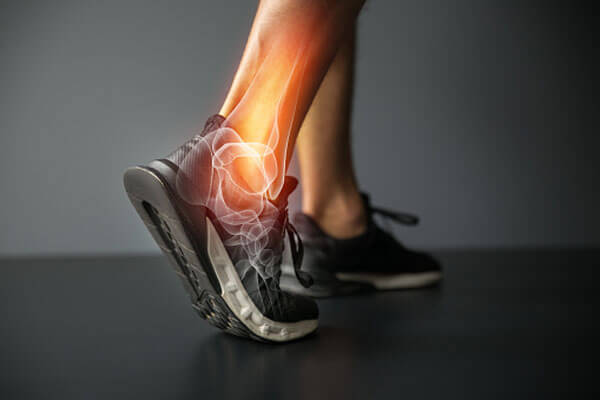Sprains
Ligaments are tough bands of fibrous tissues that connect two bones together. Ligaments can expand and come back to their normal form while a person moves a joint. Sprains are a very common injury, especially in athletes. Most sprains tend to heal on their own with some rest and immobilization.
What is a sprain?
A sprain is the medical term for stretching or tearing of the ligaments due to a sudden and extreme twist or impact. Consequently, the ability of the ligaments to support the bone movement gets impaired affecting the normal movement of the joint. In severe cases of sprain, the joint becomes loose and unstable and can be moved beyond its range of motion.
The most frequent kind of sprain is an ankle sprain. However, a sprain can happen in the wrists, hands, knees, and fingers.

What are the symptoms of a sprain?
The common symptoms of a sprain may include:
- Popping sound at the time of injury
- Pain and swelling
- Bruising
- Local joint tenderness
- Limited movement of the affected joint
- Change in the joint's normal contour (known as deformity, and can occur in severe sprains)
What are the causes and risk factors of a sprain?
The ligament damage leading to a sprain may be caused by one of the following:
- Bending, stretching or twisting of a joint beyond its normal range of motion is the common cause of wrist sprains in skiers
- Increasing the strain or pull on a ligament until it snaps into two
- Hitting the joint or one of the bones forming the joint, which occurs commonly during contact sports
Risk factors contributing to sprain are:
- Tired muscles which cannot provide adequate support to the joints
- Environmental conditions such as an uneven or slippery surface
- Poor sporting equipment, such as badly maintained footwear
How is a sprain diagnosed?
A physical examination of the affected limb is performed to identify the points of tenderness and swelling. Based on the location and severity of the pain, the doctor can determine the nature of the damage. The doctor might also ask the patient about his or her profession and a history of previous injuries.
An MRI or CT scan may also be ordered to determine the extent of damage to the ligament. X-rays may be ordered to rule out other bone injuries, such as a fracture, as the cause of the problem.
After the testing is complete, the severity of the sprain can be determined using a traditional grading system as follows:
- Grade I indicates microscopic tears in the ligament, while the stability of the joint is not affected.
- Grade II indicates a partially torn ligament with mild to moderate joint instability.
- Grade III indicates a completely torn ligament with significant joint instability.
What are the treatment options?
Mild sprains can be successfully treated by the traditional RICE method. This self-care method includes rest, ice packs, compression, and elevation, as detailed below:
- Rest the injured joint while not completely avoiding physical activity
- Apply ice to the affected area immediately and repeat every 2-3 hours for the first few days after the injury
- Compress the area with an elastic bandage to reduce and gradually stop the swelling
- Elevate the affected joint above the level of the heart whenever possible, especially at night, to reduce swelling
Treatment options for moderate to severe sprain include:
- Over-the-counter medicines such as acetaminophen and ibuprofen are helpful to relieve pain associated with sprains.
- Immobilisation of the area with a sling or braces, depending on the location of the sprain, may help to reduce the stress on the affected joint.
- Physiotherapy may be advised to improve the strength of the injured joint or limb.
- Severe sprains may need surgical treatment to repair the torn ligament.
Outlook/Prevention
It may take days to months for recovery from sprains, depending on the location and severity of the sprain, how well the rehabilitation program was followed, and the lifestyle of the individual.
Nearly 80%-90% of the individuals with grade I and II sprains recover completely, while those with grade III sprains have a risk of long-term symptoms such as persistent swelling, prolonged joint pain, or impaired joint function.
Avoiding accidents and injuries is the best way to prevent sprains. Sports-related sprains can be prevented by the following measures:
- Exercise to strengthen the muscles surrounding the joints
- Stretching before participating in athletic activities
- Increasing the intensity of exercises gradually
- Wearing comfortable and supportive shoes
- Wearing protective equipment while involving in activities such as in-line skating
